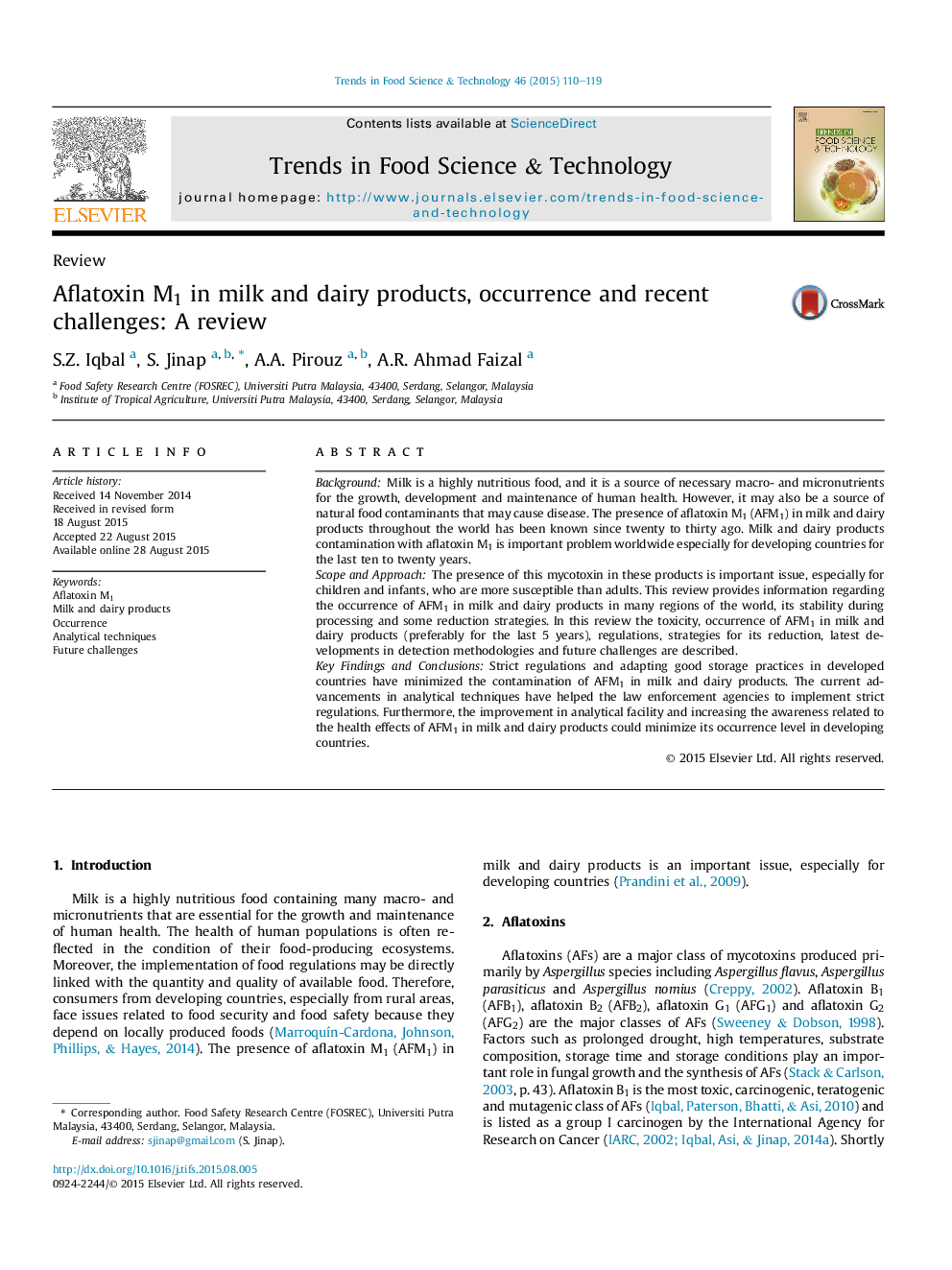| Article ID | Journal | Published Year | Pages | File Type |
|---|---|---|---|---|
| 2098601 | Trends in Food Science & Technology | 2015 | 10 Pages |
•Aflatoxin M1 in milk and dairy product is a serious issue.•Previous studies have shown high level of AFM1 contamination in milk and milk products.•The recent development in detection techniques for AFM1 has helped its regulations in milk products.•To avoid or minimize the health hazards, urgent steps should be taken.
BackgroundMilk is a highly nutritious food, and it is a source of necessary macro- and micronutrients for the growth, development and maintenance of human health. However, it may also be a source of natural food contaminants that may cause disease. The presence of aflatoxin M1 (AFM1) in milk and dairy products throughout the world has been known since twenty to thirty ago. Milk and dairy products contamination with aflatoxin M1 is important problem worldwide especially for developing countries for the last ten to twenty years.Scope and ApproachThe presence of this mycotoxin in these products is important issue, especially for children and infants, who are more susceptible than adults. This review provides information regarding the occurrence of AFM1 in milk and dairy products in many regions of the world, its stability during processing and some reduction strategies. In this review the toxicity, occurrence of AFM1 in milk and dairy products (preferably for the last 5 years), regulations, strategies for its reduction, latest developments in detection methodologies and future challenges are described.Key Findings and ConclusionsStrict regulations and adapting good storage practices in developed countries have minimized the contamination of AFM1 in milk and dairy products. The current advancements in analytical techniques have helped the law enforcement agencies to implement strict regulations. Furthermore, the improvement in analytical facility and increasing the awareness related to the health effects of AFM1 in milk and dairy products could minimize its occurrence level in developing countries.
